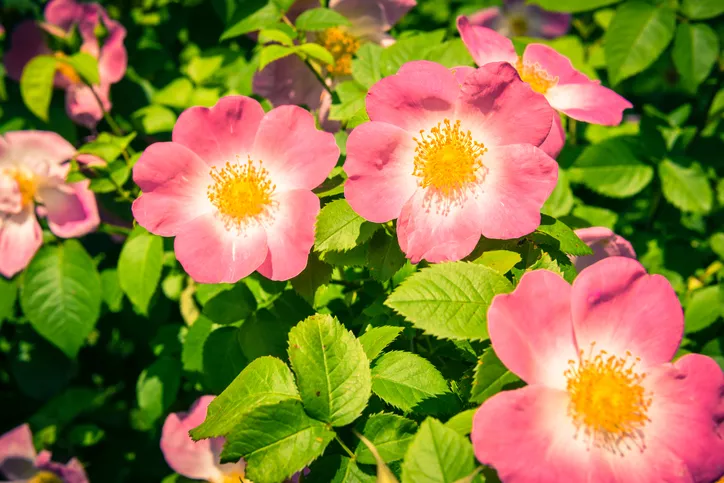The experienced gardener understands the term "dog rose" to mean not just one, but various types of wild roses, all of which are quite robust in their properties and bloom profusely. In addition, the shrubs are very vigorous and are not only suitable for solitary plants, but above all for dense hedge plantings. Such a wild rose hedge requires little care, and it hardly needs to be trimmed.
 Dog roses should be pruned very carefully
Dog roses should be pruned very carefully
Thinning is better than pruning
Dog roses usually do not flower on this year's shoots, but on the two-year shoots. For this reason, pruning should be done very carefully so that you don't accidentally deprive yourself of the hoped-for blooming splendor. In any case, a pruning is basically not necessary or only necessary every few years, because a simple thinning cut is usually sufficient for the dog rose.
When thinning out, all diseased, damaged, bare or otherwise disturbing branches and shoots should be removed, except for this year's. The new shoots should be left on the bush, as they will bear the new flowers in the following year. If possible, this cut should be made after leaf loss in late autumn (but before the first frost!), whereby you should of course cut away diseased or dead branches immediately throughout the year.
Rejuvenate dog rose by radical pruning
However, about every four to five years, a more radical pruning may be necessary, since the dog rose will bare over time and form fewer flowers. A rejuvenation is therefore necessary, in which the dog rose is cut back by about a quarter to half. Make sure you always cut about five millimeters above an outward-pointing eye or new shoot and always make the cut at a slight angle. This cut should also ideally be carried out on a frost-free day in late autumn.
Rules for pruning
You should observe the following pruning rules so that your dog rose can cope well with the pruning and then continue to grow even more vigorously:
- Only cut with freshly sharpened and cleaned tools.
- Disinfection with high-proof alcohol prevents the penetration of germs.
- Be sure to wear gloves when cutting to avoid injury from the thorns.
- If you hold the cut surfaces at a slight angle, the wounds will heal better.
- Larger cuts should be treated with a wound sealant.
- Dead and diseased wood is immediately removed and disposed of - but not in the compost!
- Cut back old wood regularly to keep the shrub young.
tips
There is a good motto for pruning not only wild roses: Always cut back weak shoots heavily, but only lightly cut back strong shoots.